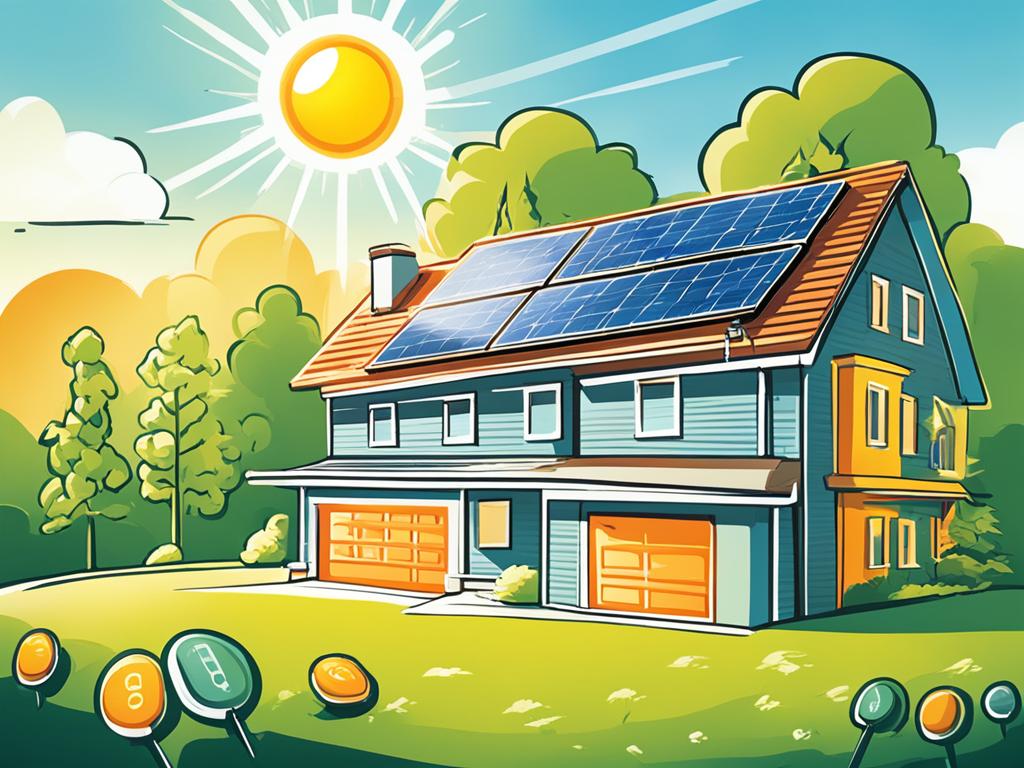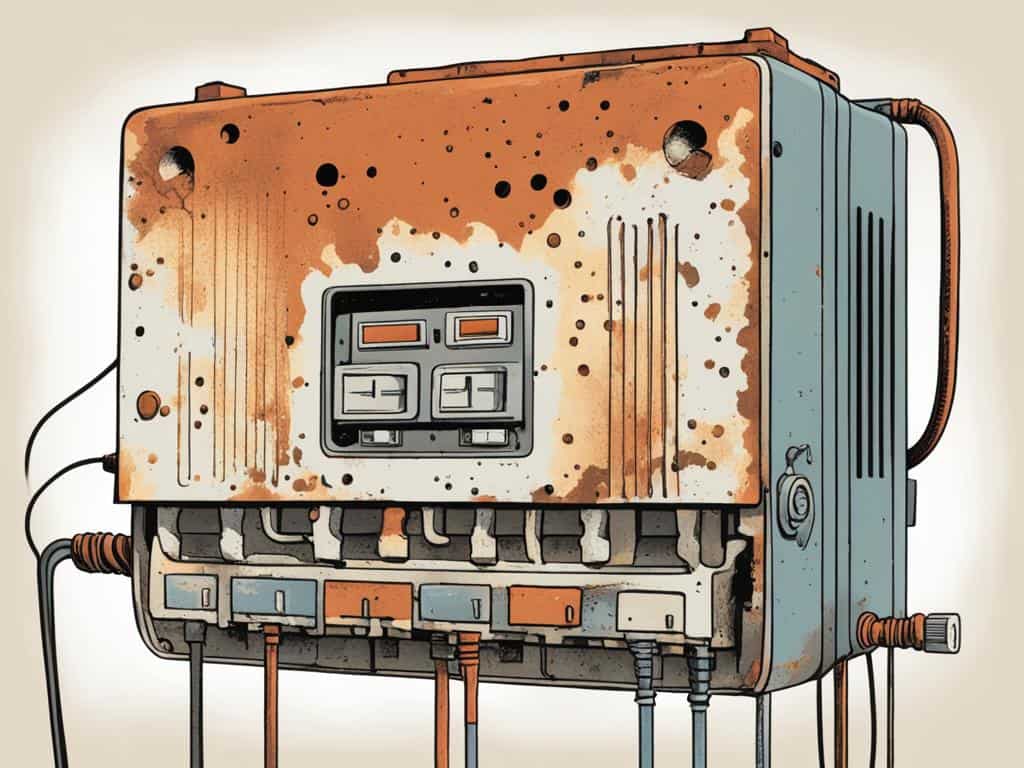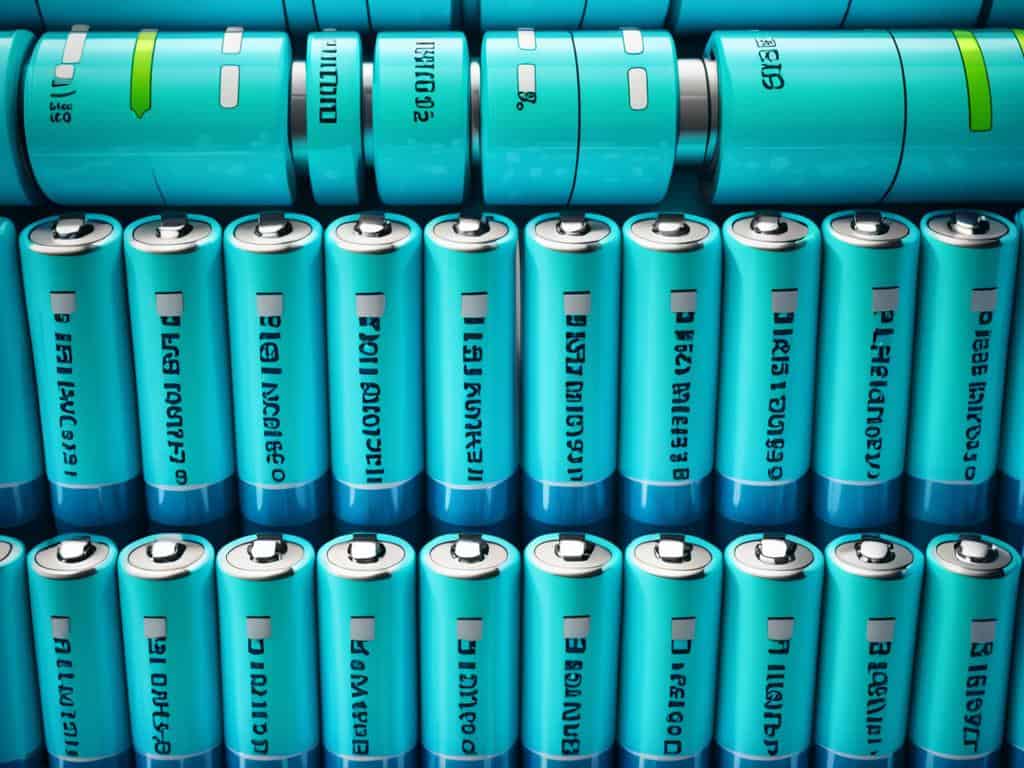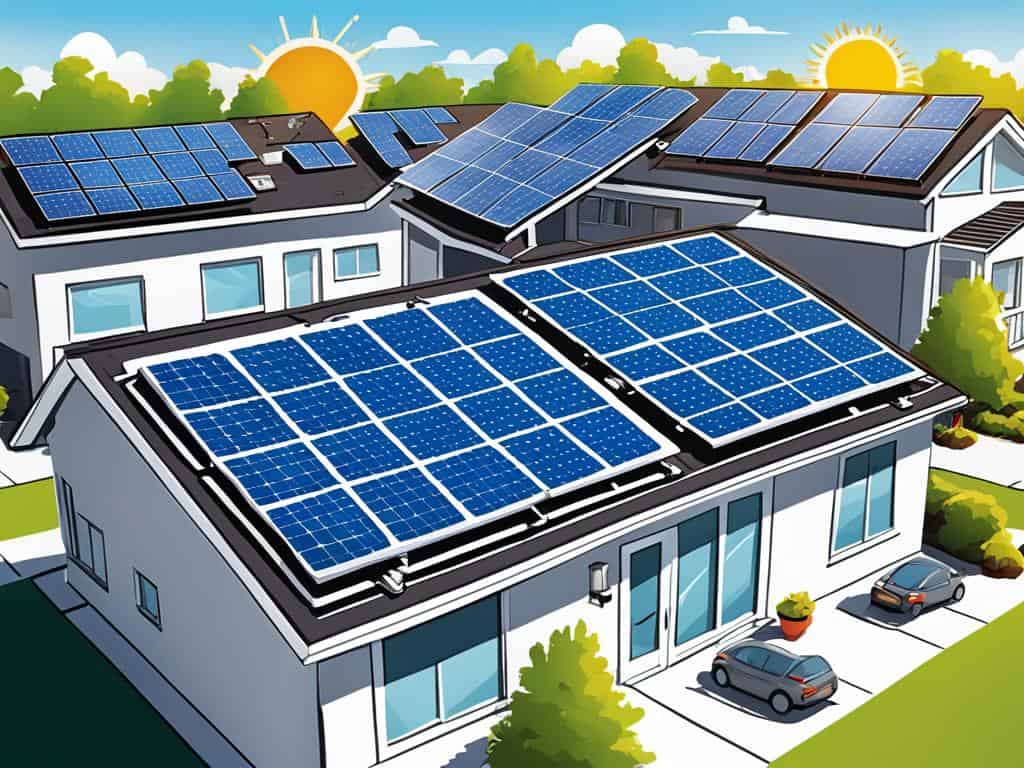Comparative Analysis: Solar Inverters vs. Traditional Inverters
Explore the benefits and distinctions between solar inverters and traditional inverters for efficient energy use in India’s burgeoning solar sector.

Renewable energy is now a key player in the world, with India experiencing a major shift. In 2022, solar energy reached a huge milestone – solar installations crossed the 1 terawatt mark. This covered about two percent of the global electricity needs. It shows the powerful growth of India’s solar sector. It also highlights the need to compare solar inverters with traditional ones in regard to efficiency and sustainability. Fenice Energy has been dedicated to clean energy for over 20 years. They are leading the change towards smarter and more affordable power systems with top solar inverter technology. In sun-rich areas, solar PV projects are now the cheapest source of electricity. This marks the start of a big change in how India gets its energy.
The big question now is about the role of inverters in this green revolution. We’re looking at solar inverters against traditional inverters – a crucial battle for energy efficiency in India. The International Energy Agency expects solar capacity to grow by more than 1 TW from 2022 to 2027. This holds significant promise for the Indian market and Fenice Energy’s future plans. Switching to solar isn’t only about being green. It’s about accessing a source of energy that makes power more widespread and cuts operation costs dramatically.
Key Takeaways
- Solar inverter vs traditional inverter debate essential for India’s energy-efficient future.
- Fenice Energy spearheads adoption of cutting-edge solar inverter solutions in India.
- Global PV capacity hits over 1 TW, indicating a robust market for solar inverters.
- Solar power emerges as the most cost-effective energy source in high solar potential areas.
- India’s solar sector poised for significant growth backed by advancements in inverter technology.
- Energy savings and sustainability drive the conversation for India’s transition to solar inverters.
Understanding the Role of Inverters in Energy Systems
In India’s quest for more electricity and sustainable growth, the best solar inverter plays a key role in energy systems. These inverters are vital in turning sunlight into electricity for our buildings and homes. They have come a long way since their 19th-century mechanical origins, thanks to solar tech progress.
Today’s solar inverters do more than just convert power. They also monitor systems and communicate with complex computer networks. With more inverters connecting to the grid, solar energy’s integration into the national grid is speeding up. Fenice Energy offers cutting-edge inverter solutions essential for India’s energy security and self-reliance.
Smart inverters now tackle disruptions and fluctuations in the power grid caused by more inverter use. They help keep the grid stable, providing services like voltage and frequency adjustment, and reactive power management. This stability supports the growing role of solar energy in India’s energy landscape.
Inverters come in various forms for different uses within solar energy setups. Big plants use central inverters, while medium setups prefer string inverters, and individual panels use microinverters. Together, these diverse inverter types make energy use more efficient in many applications.
The idea of maximum power point tracking (MPPT) significantly improves how solar panels work. MPPT techniques like perturb-and-observe and incremental conductance find the best operation points for high efficiency.
Grid-tie inverters effectively match the grid’s phase, voltage, and frequency. They automatically shut off during grid failures for repair crew safety. While transformerless systems present certain risks, solar pumping inverters offer a workaround for getting AC power without batteries.
Moreover, three-phase inverters suit three-phase electric supplies well, reducing the need for energy storage in industrial uses. Despite concerns over microinverters’ longevity, Fenice Energy commits to delivering dependable, high-performance energy solutions.
By adopting top-notch solar inverter tech, India is moving towards a future where solar power is a primary, dependable energy source.
Breaking Down the Basics: What is a Solar Inverter?
The idea of solar inverters isn’t new. It has changed a lot since the 1800s, when they first started as mechanical devices. Now, they use advanced electronics like silicon or gallium arsenide. They are key for homes to use solar energy efficiently.
Definition and Functionality of Solar Inverters
A top-quality solar inverter changes electricity from solar panels into a type our homes can use. It takes the direct current (DC) from the panels and turns it into alternating current (AC). This step is critical to make solar energy usable for everyday stuff.
How Solar Inverters Optimize Renewable Energy
Modern inverters play a big role in keeping the power grid stable. They handle the balance between electricity supply and demand. These units can even start a grid on their own, offering smart solutions for renewable energy.
| Inverter Type | Use Case | Functionality | Benefits |
|---|---|---|---|
| Stand-Alone Inverter | Isolated systems | Operates without grid connection | Energy autonomy during outages |
| Grid-Tie Inverter | Connected to the grid | Synchronizes with grid power | Efficient energy transfer during normal operations |
| Battery Backup Inverter | Systems with energy storage | Provides power during grid failures | Reliability during outages |
| Intelligent Hybrid Inverter | Integrated panel and battery systems | Manages solar and stored power | Flexibility for future system expansion |
| Microinverter | Individual solar panels | Minimizes impact of shading/malfunction on individual panels | Maximizes overall system output |
There are many types of inverters, each serving different needs. From stand-alone to smart hybrids, each offers unique benefits. Microinverters, lasting up to 25 years, work well even in the shade. They make solar systems more durable, especially for home use.
Fenice Energy is leading the way with solar inverters for homes, aiming for a greener future. By understanding solar inverters, we see their crucial role in renewable energy. They are essential for a sustainable energy system in India.
The Traditional Inverter Explained

The traditional inverter has been a key part of energy backup systems for years. It shows the strength of inverter technology from the past. The early versions, created in the 19th century, were amazing mechanical designs. They set the stage for the advanced systems we have now. Traditional inverters turn DC power from batteries into AC power. This has made them very reliable, even in places where power often goes out. Despite new, smarter devices, these basic units are still a go-to affordable solar inverter option in India’s diverse energy scene.
Unlike smart inverters that adapt to changes in the grid on their own, traditional inverters need an outside signal to switch. They are made to follow the grid, which is fine for basic use. But they can’t make their own signals, unlike some newer types. Yet, because they are simple, they are easy to keep up. This is very important for families in India.
Inverters today do more than just one job; they help with making energy and keeping the grid stable. Traditional inverters give a simple and trusted way to get AC power right away. However, they don’t have features like automatic generation control. That’s something newer inverter-based tools do. These modern inverters can handle energy in smart ways. They can get energy from sources like the sun or batteries. This makes them essential today, as managing energy wisely is crucial.
There are many modern inverter types, like central, string, and microinverters. Each one is good for certain ways of making power and making solar systems work better. But many people still prefer the simple and cheap option of traditional inverters. Fenice Energy understands this. They offer a wide range of services to different customers. They prove that even simple technology can give good energy solutions for everyone.
| Inverter Type | Usability | Energy Generation Method | Energy Control Source | Reliability |
|---|---|---|---|---|
| Traditional (grid-following) | Basic power backup | Relies on stored DC power | Requires external grid signal | High due to simplicity |
| Grid-forming | Advanced grid operations | Can generate energy at any frequency | Can generate internal signal | High with sophisticated control |
| Smart inverters | Responsive grid integration | Adjusts to grid voltage/frequency deviations | Can come from generation or storage | High with grid services capabilities |
| String inverters | Solar systems with multiple panels | Maximizes power via MPPT | Regulates voltage at panel level | Varies with system complexity |
| Hybrid inverters | Systems with battery storage | Manages multi-directional electricity flow | Optimizes output of solar panels | High for flexibility in energy flow |
As inverter technology gets better and the search for renewable energy, like affordable solar inverters, continues in India, traditional inverters will still be used. They are easy to use, cheap, and reliable. They are a good choice for many. This is especially true when you consider the deep experience and wide range of clean energy solutions from Fenice Energy.
Key Factors Driving the Solar Inverter Vs. Traditional Inverter Debate
In India, as we push towards more renewable energy, the talk about inverters is getting louder. We’re looking at three major things: how they turn energy into power we can use, their costs and how long they last, and how green and lasting they are. Fenice Energy is here to help people find their way through this, with over 20 years of know-how in clean energy.
Energy Source and Conversion
At the core of the debate between solar and traditional inverters is where they get their energy. Solar inverters get energy from the sun, turning it into power for homes and businesses very efficiently. Regular inverters, though, depend on the electrical grid which can be unpredictable. Many people prefer solar inverters for their strong energy conversion, especially for homes and small businesses. By 2028, they’re expected to lead the market.
Comparative Costs and Longevity
Talking about costs and how long they last helps clear up a lot about solar versus traditional inverters. Solar inverters might cost more at first because of their tech, but they save money in the long run. Traditional inverters might seem cheaper at first but tend to cost more as time goes on because they rely on the grid. The real value of each depends on where you are, like the Asia Pacific being a big market in 2022.
Environmental Impact and Sustainability
How green and lasting inverters are is a big part of this discussion. Solar inverters help reduce harm to the environment and move us towards using cleaner energy. Traditional inverters, on the other hand, still depend on fossil fuels. As rules get stricter, though, even the long-term benefits of greener inverters face challenges. Despite this, solar PV plants are set to lead the market by 2028. This shows how important solar inverters are for a cleaner energy future.
The Technical Side: Solar Inverter Mechanics
Solar inverters play a big role in making systems efficient. They’ve come a long way since the 19th century. Today, they turn the sun’s energy into power we can use in our homes and businesses.
Modern solar inverters keep everything working smoothly. They manage how much electricity is used and keep the power stable. This helps avoid power outages and keeps the electricity running as it should.
Fenice Energy offers top-notch solar inverters for various needs. Here’s a table showing different inverter types and what to consider for system efficiency:
| Inverter Type | Common Use Case | Efficiency | Lifespan (Years) | Cost in INR |
|---|---|---|---|---|
| Central Inverters | Large-scale PV power plants | Up to 98% | 10-15 | Varies based on output |
| String Inverters | Small commercial, residential installations | 96-98% | 10-12 | 75,000 – 1,50,000 |
| Microinverters | Single solar panel optimization | 95-97% | 10-15 | 75,000+ |
| Power Optimizers | Individual panel output management | N/A | Adds to inverter lifespan | 3,750 – 15,000 per panel |
In India, the solar market is growing fast. Knowing about different inverters helps pick the right one for your system.
Solar inverters are getting smarter. They can even start a grid on their own. Germany added five Gigawatts of solar power to their grid by 2008, showing how far solar tech has come.
Thinking about how long a solar inverter lasts is key. Fenice Energy helps choose the right inverter for your needs. This way, customers in India can follow the rules and plan for a solar system that lasts 20 years.
Operational Advantages of Solar Inverters
Switching to solar energy helps us use more renewable sources and offers many benefits. Solar inverters play a crucial role in this change. They help make the most out of solar power, boosting its efficiency.

Improving Energy Efficiency
The biggest benefit of solar inverters is their ability to dramatically increase energy efficiency. Newer models now work with more than 99% efficiency. This is a big jump from the 95-96% efficiency of older models. In a country like India, where solar power is growing, this efficiency is very important. Fenice Energy offers high-quality, efficient solutions that make sure more sunlight is turned into usable energy.
Reducing Reliance on the Grid
Solar inverters help us depend less on the power grid. They come with new features and designs that support this goal. By using energy storage systems, solar power can be saved for later use. This is great for when the sun isn’t shining. It helps users consume their own solar power and lessens the strain on the grid. In India, Fenice Energy’s solar inverters are making it easier for people and businesses to be self-sufficient. This reduces the need for traditional power and offers a reliable energy source, even with grid issues.
The design and materials of modern inverters improve India’s use of solar energy. Also, moving to designs without transformers means solar setups are smaller and more efficient. This meets the growing demand for sustainable energy solutions.
The solar inverter stands at the center of innovation and green development. With rising energy needs and grid shortcomings, solar inverters prove to be crucial. They are key to India’s goal of an efficient and self-reliant energy future.
Challenges and Considerations When Selecting a Solar Inverter
Choosing solar power means taking a step towards a greener future. Yet, it’s not without its challenges. The main hurdle is picking the right solar inverter. This is vital as it’s the heart of your solar setup, affecting everything from cost to maintenance.
Assessing the Initial Investment
The cost of solar inverters varies greatly. The level of technology and features significantly influence the price. Fenice Energy offers high-quality inverters that promise long-term benefits, despite their initial higher cost.
Different types of inverters suit different needs. Basic string inverters cost less upfront. However, advanced inverters provide more control and effectiveness, despite being pricier. Here’s a cost and feature comparison for you to consider:
| Type of Inverter | Initial Cost | Features | Lifespan | Suitable Application |
|---|---|---|---|---|
| String Inverters | INR 20,000 – 50,000 | Simple systems, fewer parts, easily replaceable, modularity | 10-15 years | Smaller commercial environments |
| Central Inverters | INR 1,00,000+ | High capacity, more complex, grid-services capable | 15-20 years | Utility-scale industrial plants |
| Microinverters | INR 5,000 – 15,000 (per panel) | Panel-level optimization, mitigates shading issues | 10-20 years | Residential to medium commercial |
Also, ensure your inverter matches your solar panel array’s size. It might need a 25% capacity cushion for peak performance.
Understanding Maintenance Needs
Solar inverters can last up to 20 years, but they need care. Maintenance includes inspections and updates. Fenice Energy provides the expert support needed.
Maintenance ensures your inverter works efficiently. This means more savings and less environmental impact. It’s about making your system as effective as possible.
In conclusion, picking the right solar inverter is crucial. It affects your system’s performance and savings. Understanding the differences in inverters helps make a choice that fits your needs and budget.
The Verdict on Traditional Inverters: Dependability and Simplicity
When you want to buy a solar inverter in India, the trust in traditional inverters is clear. They are famous for their consistent performance, especially during unexpected power outages. This reliability ensures our daily routines face little interruption.
These inverters are known for their long life and simplicity. They are designed to be straightforward, showcasing the power of inverter dependability. This is vital for those who need continuous power. Unlike complex modern solar inverters, traditional ones are more user-friendly and easy-to-use inverter solutions.
Though simple, many in India are now looking towards more eco-friendly and advanced options, like those from Fenice Energy. Yet, for quick backup power without big infrastructure changes, traditional inverters stay favored.
| Inverter Type | Dependability | User-Friendliness | Complexity | Maintenance Cost |
|---|---|---|---|---|
| Traditional Inverter | High | High | Low | Low |
| Solar Inverter | Varies | Medium | Medium-High | Medium-High |
Fenice Energy offers a range of energy solutions, including cutting-edge solar tech. This aims to close the gap between traditional inverter simplicity and renewable energy benefits.
Cost Analysis: Initial Outlay vs. Long-Term Savings
Looking into solar energy, it’s key to compare upfront costs with future savings and profits. In India, as we go green, the cost of solar inverters gets more focus for both homeowners and businesses.
Evaluating Upfront Costs
To start, let’s talk about the first costs of solar inverters. Fenice Energy tells us to look at the big picture. Even though solar inverters cost more at the start, they save a lot of money over time. This info is vital to see if going solar makes sense financially:
- The average U.S. household uses about 10,244 kWh of energy each year as of 2023.
- A 10 kW DIY solar panel system could cost roughly INR 1,035,000.
- Having a 10 kW system installed by pros could end up costing about INR 1,485,000.
- Several factors, including how much electricity you use, system costs, and solar perks, shape your total cost.
Projecting Long-Term Benefits and ROI
We also need to look at the long-term savings and ROI of solar technology. These benefits are not just about saving on bills. They also increase the value of properties:
| System Type | Total Cost (INR) | Payback Period (Years) | ROI (%) |
|---|---|---|---|
| DIY Solar Panel System – 10 kW | 1,035,000 | 6 | 247.82 |
| Professional Solar Panel System – 10 kW | 1,485,000 | 8.6 | 148.18 |
Utility rates have gone up by an average of 2.9% each year for 15 years. This makes the case for solar stronger. It shows us how electricity costs keep going up, but solar can protect us from that.
Fenice Energy comes with over 20 years of knowledge in maximizing solar investments. They offer durable, efficient solar solutions. The team helps homeowners understand the benefits and costs of solar, leading to smart choices that make the most of solar’s financial and eco-friendly perks.
Statistics show that homes with solar not only get back their initial investment. They also make ongoing savings on electricity. Plus, there are great tax breaks for going green with solar.
Selecting the Right Inverter for Your Needs
Choosing the right solar inverter involves careful thought and understanding your energy needs. There are various types, like grid-tie, off-grid, and hybrid inverters. It’s crucial to know your needs to pick the right energy solution customization. In India’s diverse weather and energy use, inverters must be efficient, sturdy, and adaptable.
- Examine your energy use to pick the right inverter, like a string inverter, microinverter, or power optimizer.
- Look at technical aspects such as input DC voltage and output AC voltage. Make sure it fits your home’s energy setup.
- Check the inverter’s efficiency. Brands like SMA and Omnik have high conversion rates, meaning less energy is wasted.
- Consider how well the inverter handles climate challenges and its protection tech, like IP65, to withstand extreme weather.
- Think about how long the inverter lasts and its maintenance needs, as solar inverters might need fixing or replacement every 10 to 15 years.
Solar inverters vary in price, but the focus should be on long-term gains rather than just the initial cost. In India, a basic string inverter’s price ranges from INR 37,000 to INR 74,000. Microinverters and power optimisers may cost more but can enhance energy production or efficiency under certain conditions.
It’s wise to pick a trusted supplier when looking at warranties and services. HIES Accredited Installers, for example, ensure a smooth installation. Additionally, consider local support and repair services. These can greatly affect your solar inverter’s performance and lifespan.
Working with an experienced company like Fenice Energy simplifies choosing a solar inverter. They help pick an inverter that meets your needs and ensure proper installation and maintenance. This results in a personalized energy solution customization for your situation.
In summary, the right solar inverter choice involves looking at efficiency, durability, and the maker’s reputation. It must match your home energy requirements and budget. With accurate info, Indian buyers can choose wisely for a green and efficient energy future.
Conclusion
India is moving towards a future with sustainable power solutions. Solar inverters play a big role in this change. Fenice Energy is part of this journey, offering clean energy systems perfect for India’s diverse conditions. These solutions work well, even in cold winter months.
Solar inverters in India do more than just capture sunlight; they bring freedom and smart savings. They help send extra power back to the grid in cities and make remote areas energy self-sufficient. With different types of inverters available, every home and business can find what they need. Advanced MPPT technology helps save money and supports a green energy future.
Choosing the right inverter involves looking at efficiency, weather resistance, and cost. Fenice Energy, with over 20 years of experience, helps people make the best choice. From understanding startup voltage to space needs, they find systems that beat winter’s cold and lead to energy freedom. Solar inverters are key to a sustainable, smart power solution in a growing India.


